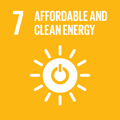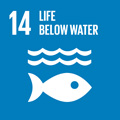- Docente: Alessandro Gesuato
- Credits: 5
- SSD: AGR/10
- Language: Italian
- Teaching Mode: Traditional lectures
- Campus: Cesena
- Corso: First cycle degree programme (L) in Aquaculture and Fish Production Hygiene (cod. 6062)
-
from Feb 17, 2025 to Apr 07, 2025
Learning outcomes
At the end of the course, the student acquires general knowledge relating to the systems and construction techniques of animal husbandry works and is able to carry out their management and general planning.
Course contents
PLUMBING AND SYSTEMS
Part I: HYDRAULICS
Physical properties of fluids. Ideal fluids. Hydrostatic. Pressure. Pushed against the walls. Float balance. Hydrodynamics: Currents. Continuity equation. Hydraulic energy. Real fluids. Pressure losses. Free surface ducts. Pipelines under pressure. Water lifting machines. Pumps in series and parallel. Filtration. Hydraulic measurement methods and instruments. Water regulation methods and works.
Part II: BREEDING CONSTRUCTION AND SYSTEMS
Site selection: Morphometric, hydrological and economic conditioning. Water supply: Collection from deep waters, from internal surface waters, from transition waters, from marine waters. Quality control at the entrance. Resource availability and water balance: legal and administrative aspects.
Land-based aquaculture systems: Intake and lifting works. Shape and profile of the tanks. Distributors and diffusers. Bathtubs in lightweight material. Ground tubs. Concrete tanks. Foundations and underthrusts. Covers. Extensive and intensive schemes, open circuit and with recirculation. Service facilities. Mass control in the tank: Hydraulic control quantities and parameters. Geometries, flows, inputs and emissions. Mass and energy balances. Transport, diffusion, storage. Water conditioning in the tank. Oxygen balance. Natural oxygenation. Internal consumption. Debris removal. Artificial oxygenation techniques.
Valley farming: Water exchange and tidal flow. Distribution of flows and channels. Storage and wintering basins. Selection and capture techniques. Ancient and modern works.
Mariculture systems; Floating cages, sinking cages. Anchoring. Feeding and trapping techniques. Reporting and monitoring.
Part III: CONSTRUCTIONS AND TREATMENT PLANTS
Wastewater treatment: Regulation of discharges. Grilling and sieving. Granular sedimentation. Mass sedimentation. Biological purification using attached and suspended biomass. Oxidation. Nitrification and denitrification. Activated sludge schemes with and without recirculation. Disinfection techniques. Sludge disposal. Sand filtration. Natural systems for treatment and recovery pursuant to Legislative Decree. 152/2006.
The preliminary project (to be developed during the practice hours)
General distribution design. Materials. Technical and manufacturing details.
Practical example on the preliminary design of an intensive aquaculture plant equipped with treatment and recirculation phases.
Readings/Bibliography
Recommended:
• For the Hydraulics part: HANDBOOKS on files provided by the teacher
• For the Construction and Breeding Plants part: HANDBOOKS available in the secretariat
• For the Construction and Treatment Plants part: HANDBOOKS on files provided by the teacher
Auxiliary texts:
authors: Bragadin G.L. , Mancini M.L.
title: "PURIFICATION AND DISPOSAL OF URBAN WASTE"
publisher: PITAGORA - Bologna
Volume 1
author: Gilbert Barnabé
title: AQUACULTURE
publisher: Technique et documentation –Lavoisier
Volume 1-Volume 2
Teaching methods
Each topic covered with frontal teaching is accompanied by an explanatory numerical example or practical example.
The hours of frontal teaching are associated with hours of personal assistance in the analysis of intensive aquaculture systems equipped with wastewater treatment phases.
During the course, with the assistance of the teacher, students write a personal or group paper for the design or verification of an intensive farming system on land or at sea.
Assessment methods
Learning is verified through a final oral exam which verifies the acquisition of the expected knowledge and skills. This exam consists of three questions, each relating to one of the three main parts of the teaching program: Hydraulics, Plants and Buildings for breeding, Plants and Buildings for treatment.
For those attending, the oral exam will consist of the oral presentation of the personal or group work created during the lessons.
Passing the exam will be guaranteed to students who demonstrate knowledge and mastery of the fundamental concepts illustrated in the teaching and a higher score will be attributed to those who demonstrate that they are capable of using all the application contents provided in lessons and of illustrating them with the ability to language.
Teaching tools
° Preventive delivery of PDF files uploaded to virtual and used in frontal teaching.
° Virtual delivery of an updated compendium of the current technical legislation regarding the regulation of discharges and the supply, treatment and reuse of waste water.
Office hours
See the website of Alessandro Gesuato
SDGs




This teaching activity contributes to the achievement of the Sustainable Development Goals of the UN 2030 Agenda.
